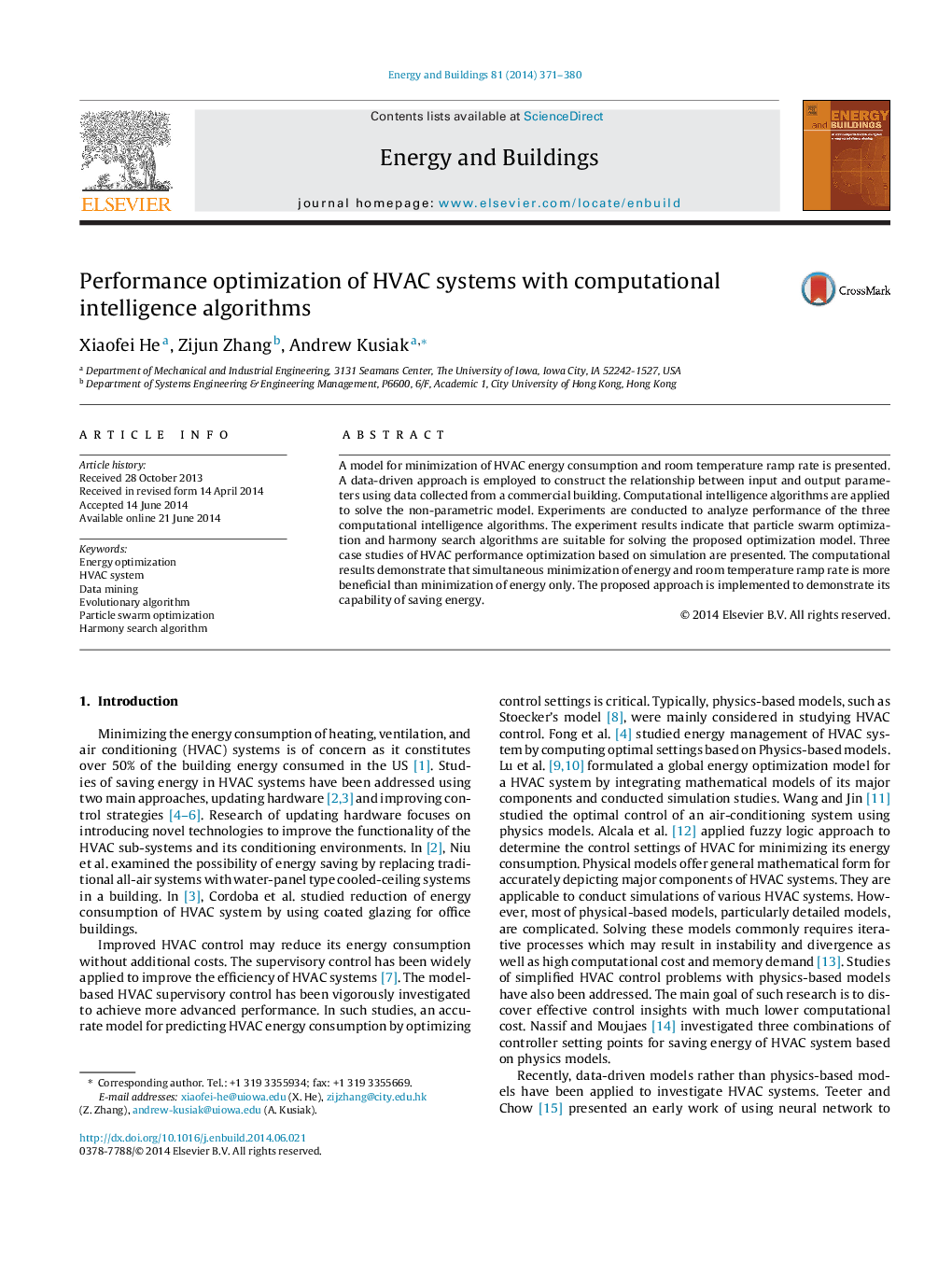| Article ID | Journal | Published Year | Pages | File Type |
|---|---|---|---|---|
| 262844 | Energy and Buildings | 2014 | 10 Pages |
•High accuracy models are built using data-driven models of HVAC energy consumption are built.•Temperate ramp rate is introduced to optimization model.•Design and analysis of computer experiment technique is utilized to compare three computational intelligence algorithms.•Energy savings over 15% have been achieved.
A model for minimization of HVAC energy consumption and room temperature ramp rate is presented. A data-driven approach is employed to construct the relationship between input and output parameters using data collected from a commercial building. Computational intelligence algorithms are applied to solve the non-parametric model. Experiments are conducted to analyze performance of the three computational intelligence algorithms. The experiment results indicate that particle swarm optimization and harmony search algorithms are suitable for solving the proposed optimization model. Three case studies of HVAC performance optimization based on simulation are presented. The computational results demonstrate that simultaneous minimization of energy and room temperature ramp rate is more beneficial than minimization of energy only. The proposed approach is implemented to demonstrate its capability of saving energy.
